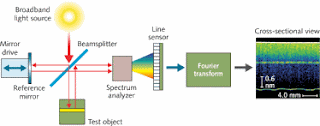Vitreous incarceration is a
condition where vitreous is trapped within a wound or incision site. When
involving the cornea, vitreous can prolapse into the anterior chamber and pass
through a microscopic wound at the location of an incision. A vitreous strandis visible on slit lamp examination and the condition is often associated witha peaked pupil where the vitreous strand contacts the iris. If the vitreous
penetrates through all the corneal layers and onto the extra ocular surface, a
vitreous wick syndrome develops significantly increasing the risk for
endophthalmitis. Vitreous incarceration can also cause pupillary block
glaucoma, cystoid macular edema, vitreoretinal traction, and corneal
decompensation.
Vitreous
wick syndrome has been documented as a cause of delayed onset endophthalmitis.
In 1970, Ruiz and Teeters described the condition in eleven patients who
presented with delayed-onset endophthalmitis after intracapsular cataract
extraction surgery (ICCE) with vitreous prolapse. The protruding vitreous
strand prevents the wound from closing and can allow micro-organisms to enter.
Anterior vitreous wick syndrome is commonly associated with ICCE but has alsobeen reported in cases of extracapsular cataract extraction (ECCE), after
posterior capsulotomies, as well as corneal relaxation incisions.

No comments:
Post a Comment